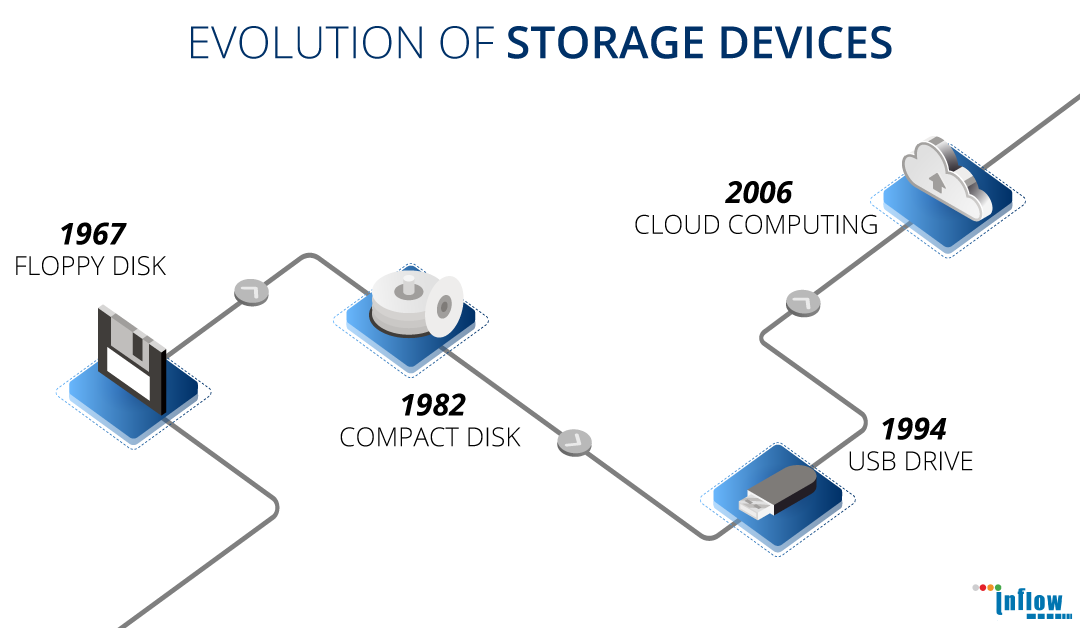 The human brain ability to store and remember vast amounts of information is a mystery that scientists are still understanding. While we can remember lots of information, we cannot remember every detail and sometimes we completely forget the most critical data.
The human brain ability to store and remember vast amounts of information is a mystery that scientists are still understanding. While we can remember lots of information, we cannot remember every detail and sometimes we completely forget the most critical data.
This information limit resulted in people developing physical objects or devices to store and relay vital information. Storing data in papers and books was not an option due to their volatility, and as a result, storage devices surfaced in the 1950s. The price of these storage devices was not affordable, and yet large corporations somehow invested in these devices. The earliest storage device with a capacity of 3.75 MB cost $3200 per month on a lease. In comparison with data storage today, it is a large expenditure for a small storage capacity. Lucky for us, we’re spending very little on modern storage devices that have massive capacities!
Storage devices have transformed in terms of size and price, allowing us to carry voluminous amounts of data on devices that can fit in our pockets.
Here’s a look at the evolution of storage devices:
- Floppy disks: 1967
If you’re a 90’s kid, then you may have used Desktops that looked similar to small tv’s. The CPU’s from this era had drives that used small compact floppy disks.
Designed to store text and image documents, the storage capacity of a floppy is just 1.4 MB. While that may seem to be a minuscule storage space, compared to the devices we use today; it was sufficient for the period since the information stored on the drive was limited. Computers, laptops and even game consoles from olden times, consist of a floppy disk drive. But today, FDDs (Floppy disk drives) are rarely used or seen.
- Compact disks: 1982
As time went on, people had more data that needed to be stored, and CD-ROMs helped serve this need. The acronym ROM – Read-Only Memory, means that the data can be read but not written or erased. This was revolutionary, because other than computer data, audio files could be stored and played using a CD player. CDs contain up to 680 MB of storage space and can store software and game consoles.
- USB flash drive:
Unlike floppies and CDs, USB drives can store, erase and reprogram data. USBs a.k.a thumb drives or pen drives are exactly the size of a human thumb. Don’t let their small size fool you as they can store data anywhere between 8GB to 256 GB at low costs. USBs simply need to be connected to a USB port in a desktop or a laptop. Similar to USBs are External portable hard drives that hold up to 1 Terabyte of information and work similar to a USB.
- Cloud Computing:
Cloud Computing was a ground-breaking discovery in the information age. The entire concept of storage was repurposed by removing the need for active management by the user. The user can remotely access data that is present on “clouds” that belong to either the same organisation or multiple organisations. The need for finding a storage space that is virtual and accessible from anywhere led to the development of cloud storage.
The amounts of data and information we use or exchange have grown exponentially and have called for advances in data storage. For over 50 years, scientists have experimented with various methods to find a perfect storage solution. With so much data to be stored today, we can only anticipate its increase in the coming years. In the years to come, we can expect more revolutionary storage devices; far surpassing what we are used to today.


No comments yet.
Leave a Comment
Let us know your thoughts on this !